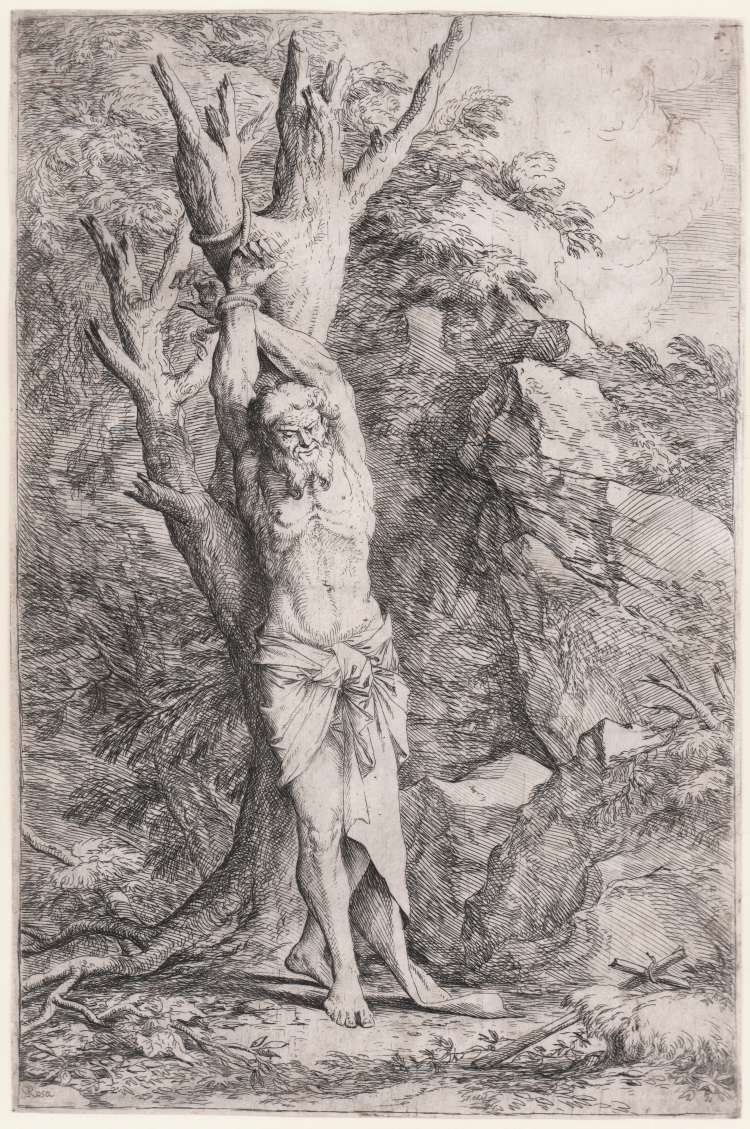



| Reference: | S10401 |
| Author | Salvator ROSA |
| Year: | 1641 ca. |
| Measures: | 252 x 343 mm |



| Reference: | S10401 |
| Author | Salvator ROSA |
| Year: | 1641 ca. |
| Measures: | 252 x 343 mm |
Etching and drypoint, 1641 circa, signed on plate at lower left.
Magnificent work, printed on contemporary laid paper without watermark, trimmed to platemark, signs of glue on verso, small repairs perfectly executed on the upper part, in general in good condition.
|
Bartsch 2, Rotili 91
|
Salvator ROSA (Napoli 1615 - Roma 1673)
|
Like Testa, Castiglione and Della Bella, Salvator Rosa considered the art of engraving the best technique to express his talent and, it is not by chance that he is considered, together with the already mentioned artists, one of the protagonists of Italian seventeenth-century art.
Rosa was an extremely eclectic person; his main models in art were the classicism of Carracci, the naturalism of Ribera, the contemporary Roman painting and the ancient world.
From the latter in particular, Rosa drew inspiration for his engravings, whose subjects come from the old Stoic philosophy, with the glorification of virtues though allegories. We have also to consider his passion for esotericism, which inspired him with pictorial compositions with necromancy.
His technique and total command of etching enabled his prints to be appreciated even from his contemporaries, copied by them and highly requested by collectors.
|
|
Bartsch 2, Rotili 91
|
Salvator ROSA (Napoli 1615 - Roma 1673)
|
Like Testa, Castiglione and Della Bella, Salvator Rosa considered the art of engraving the best technique to express his talent and, it is not by chance that he is considered, together with the already mentioned artists, one of the protagonists of Italian seventeenth-century art.
Rosa was an extremely eclectic person; his main models in art were the classicism of Carracci, the naturalism of Ribera, the contemporary Roman painting and the ancient world.
From the latter in particular, Rosa drew inspiration for his engravings, whose subjects come from the old Stoic philosophy, with the glorification of virtues though allegories. We have also to consider his passion for esotericism, which inspired him with pictorial compositions with necromancy.
His technique and total command of etching enabled his prints to be appreciated even from his contemporaries, copied by them and highly requested by collectors.
|